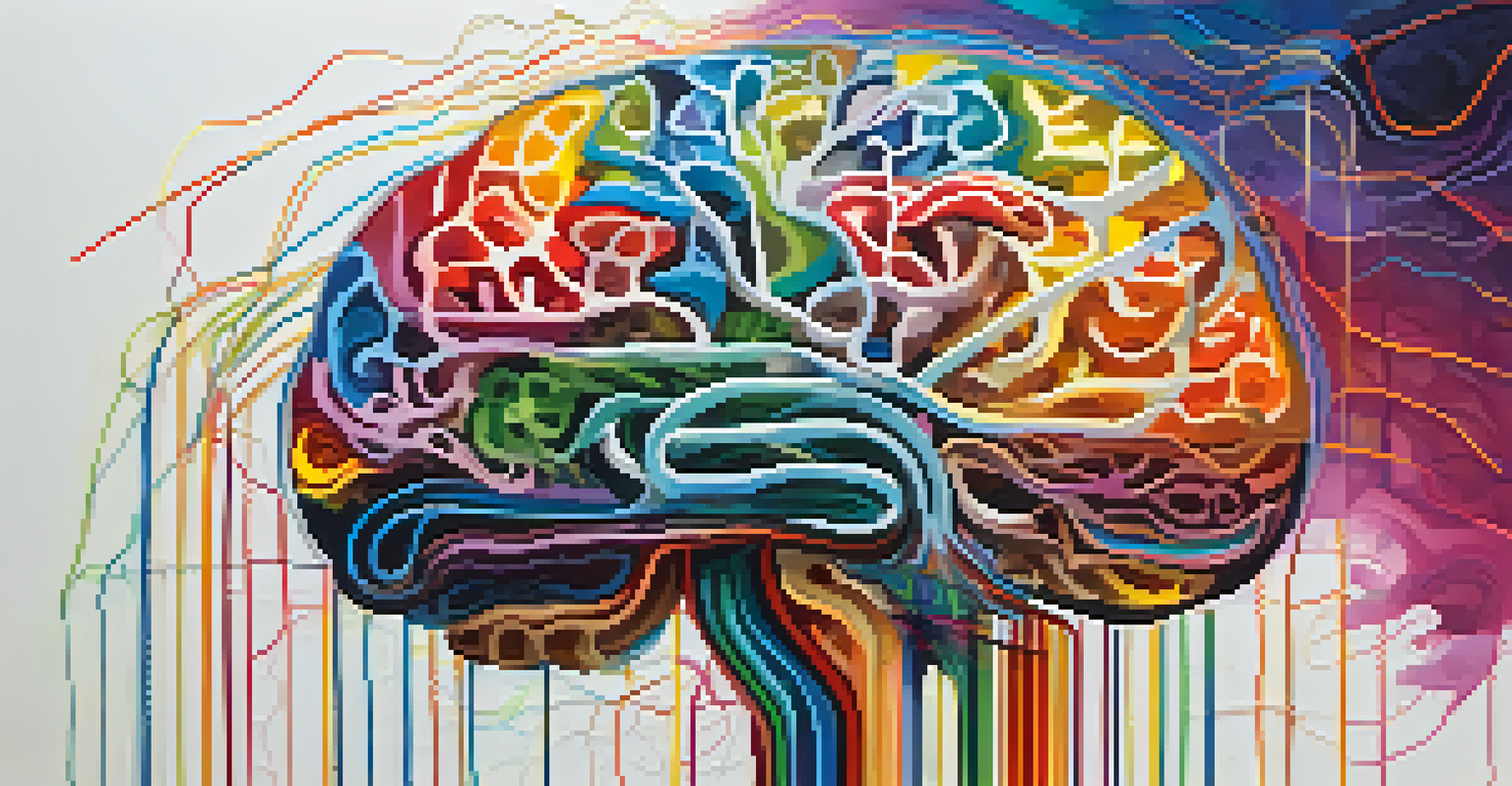The Intersection of Intention and Entheogens for Healing

Understanding Entheogens and Their Role in Healing
Entheogens, often derived from plants or fungi, have been used for centuries in various cultures for spiritual and healing purposes. These substances can induce altered states of consciousness, allowing for profound personal insights and emotional healing. In recent years, there's been a resurgence of interest in how these natural compounds can aid in mental health treatment, particularly for conditions like anxiety and depression.
The mind is everything. What you think you become.
The term 'entheogen' itself means 'generating the divine within,' which speaks to the transformative experiences many users report. For instance, psychedelics like psilocybin and ayahuasca are not just recreational; they can facilitate deep emotional healing and self-discovery. This revival in interest is often paired with a growing body of scientific research supporting their therapeutic benefits.
However, the journey with entheogens is not solely about the substances themselves. It's essential to consider the role of intention in these experiences. Setting a clear intention before the use of these compounds can create a focused framework for healing, making the entire process more meaningful and effective.
The Power of Intention in Healing Practices
Intention acts as a guiding force in any healing practice, shaping the experiences and outcomes. When individuals approach their healing journey with a clear purpose, they are more likely to achieve meaningful results. For example, someone seeking to overcome trauma might set an intention to confront and process their feelings, which can lead to significant breakthroughs during a session with entheogens.

This concept of intention isn't just a new-age idea; it has roots in various spiritual traditions and therapeutic practices. It suggests that our mindset can influence our experiences profoundly. By framing the healing process with intention, individuals can cultivate a deeper understanding of their emotions and thoughts, leading to greater self-awareness.
Entheogens Aid Emotional Healing
Entheogens can induce altered states of consciousness, facilitating profound personal insights and aiding in the treatment of mental health issues like anxiety and depression.
Moreover, the act of setting an intention can also create a safe space for exploration and vulnerability. It encourages individuals to be honest with themselves about their desires for healing, which can enhance the therapeutic effects of entheogens. This synergy between intention and substance opens doors to transformative experiences.
Setting Intentions: Practical Steps to Get Started
Setting a powerful intention begins with reflection. Before engaging with entheogens, take time to explore what you hope to achieve or understand. Journaling your thoughts or meditating on your intentions can provide clarity and enhance the overall experience. This step is crucial as it lays the groundwork for what you want to manifest during the journey.
Your intention creates your reality.
Additionally, discussing your intentions with a facilitator or trusted guide can provide valuable insights and accountability. They can help refine your goals and offer support throughout the process. A shared understanding of your intention can deepen the experience and provide a framework for navigating any challenges that arise.
Finally, it's essential to remain open and flexible during the experience. Sometimes, the insights gained might differ from your original intention, which can be a part of the healing process itself. Embracing whatever emerges can lead to unexpected discoveries and personal growth, reinforcing the idea that healing is often a nonlinear journey.
The Science Behind Entheogens and Healing
Research into the therapeutic potential of entheogens has gained momentum in recent years, revealing their ability to foster healing on multiple levels. Studies have shown that substances like psilocybin can help alleviate symptoms of depression, PTSD, and anxiety by promoting neuroplasticity—the brain's ability to reorganize itself. This means that these substances can facilitate new ways of thinking and processing emotions.
Moreover, entheogens can catalyze profound emotional experiences, allowing individuals to confront and process unresolved issues. This emotional release can be incredibly therapeutic, leading to a sense of relief and clarity. For example, participants in clinical trials have reported significant reductions in anxiety and improved emotional well-being after guided sessions with psilocybin.
Intention Enhances Healing Effects
Setting a clear intention before using entheogens can create a focused framework for healing, leading to deeper emotional understanding and personal growth.
However, it's important to approach this research with caution. While the findings are promising, entheogens are not a panacea for all mental health issues. They work best when combined with a supportive therapeutic environment and a clear intention, highlighting the importance of a holistic approach to healing.
Integrating Entheogenic Experiences into Daily Life
The healing journey doesn't end when the entheogenic experience concludes. Integrating insights gained during these sessions into everyday life is crucial for long-term growth. This might involve continued journaling to process emotions, practicing mindfulness, or engaging in therapeutic conversations with a trusted friend or therapist.
Creating rituals or practices that honor the insights can also be beneficial. For instance, if an individual realizes the importance of self-compassion during their journey, they might incorporate daily affirmations or meditation focused on self-love. These small, consistent practices can help reinforce the lessons learned and promote lasting change.
Additionally, sharing experiences with a community can enhance the integration process. Engaging in discussions with others who have similar experiences can provide support, accountability, and further insights. This sense of connection can help solidify the transformative effects of the journey, fostering a community of healing and growth.
Potential Risks and Ethical Considerations
While the potential benefits of entheogens are significant, it's essential to acknowledge the risks involved. Individual reactions to these substances can vary widely, and not everyone may have a positive experience. Factors such as mental health history, setting, and emotional readiness play crucial roles in determining the outcome of an entheogenic session.
Moreover, the ethical considerations surrounding entheogen use cannot be overlooked. It's vital to engage with these substances respectfully and responsibly, especially given their cultural significance in many traditions. Appropriation and commodification of these practices can lead to harm, undermining the very healing potential they offer.
Integration is Key to Lasting Change
Integrating insights from entheogenic experiences into daily life through practices like journaling and community support is crucial for long-term emotional growth and healing.
Therefore, it's crucial to approach entheogens with respect, education, and a commitment to ethical practices. Engaging with trained facilitators, understanding the cultural context, and prioritizing personal safety can help mitigate risks while maximizing the healing potential of these powerful substances.
The Future of Intention and Entheogens in Healing
As the interest in alternative healing practices continues to grow, so does the potential for integrating entheogens into mainstream therapeutic settings. Ongoing research is paving the way for more comprehensive understanding and acceptance, which could lead to innovative treatment options for mental health issues. This evolution reflects a broader shift towards holistic approaches that consider the mind, body, and spirit in healing.
The future also holds promise for the development of frameworks that prioritize intention-setting alongside the use of entheogens. This integration could enhance therapeutic outcomes, allowing individuals to embark on their healing journeys with greater clarity and purpose. As mental health professionals and researchers collaborate, we'll likely see more structured programs that combine both elements effectively.

Ultimately, the intersection of intention and entheogens offers a rich tapestry of possibilities for healing and personal growth. By embracing these practices with an open heart and mind, individuals can embark on transformative journeys that lead to profound self-discovery and emotional well-being.